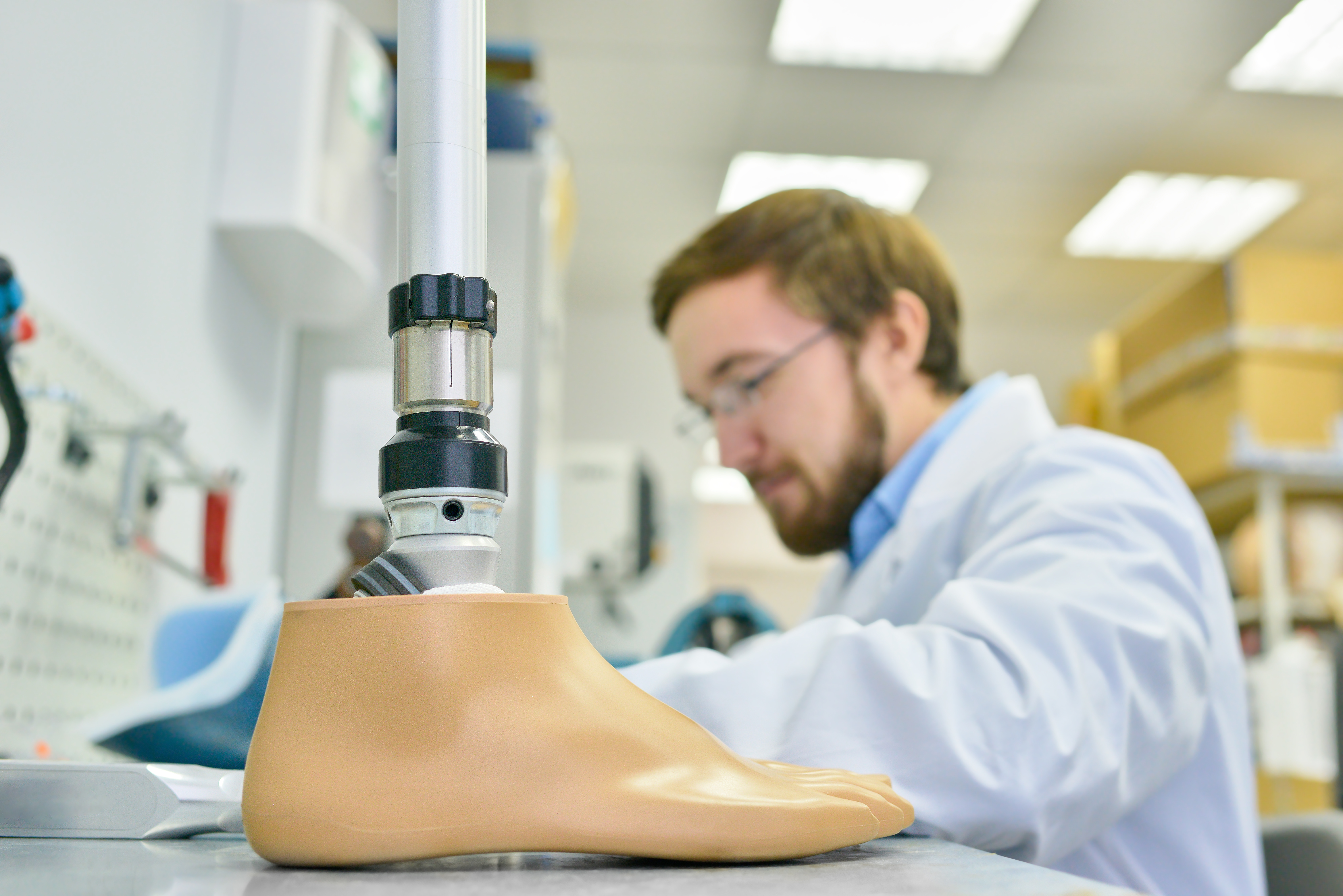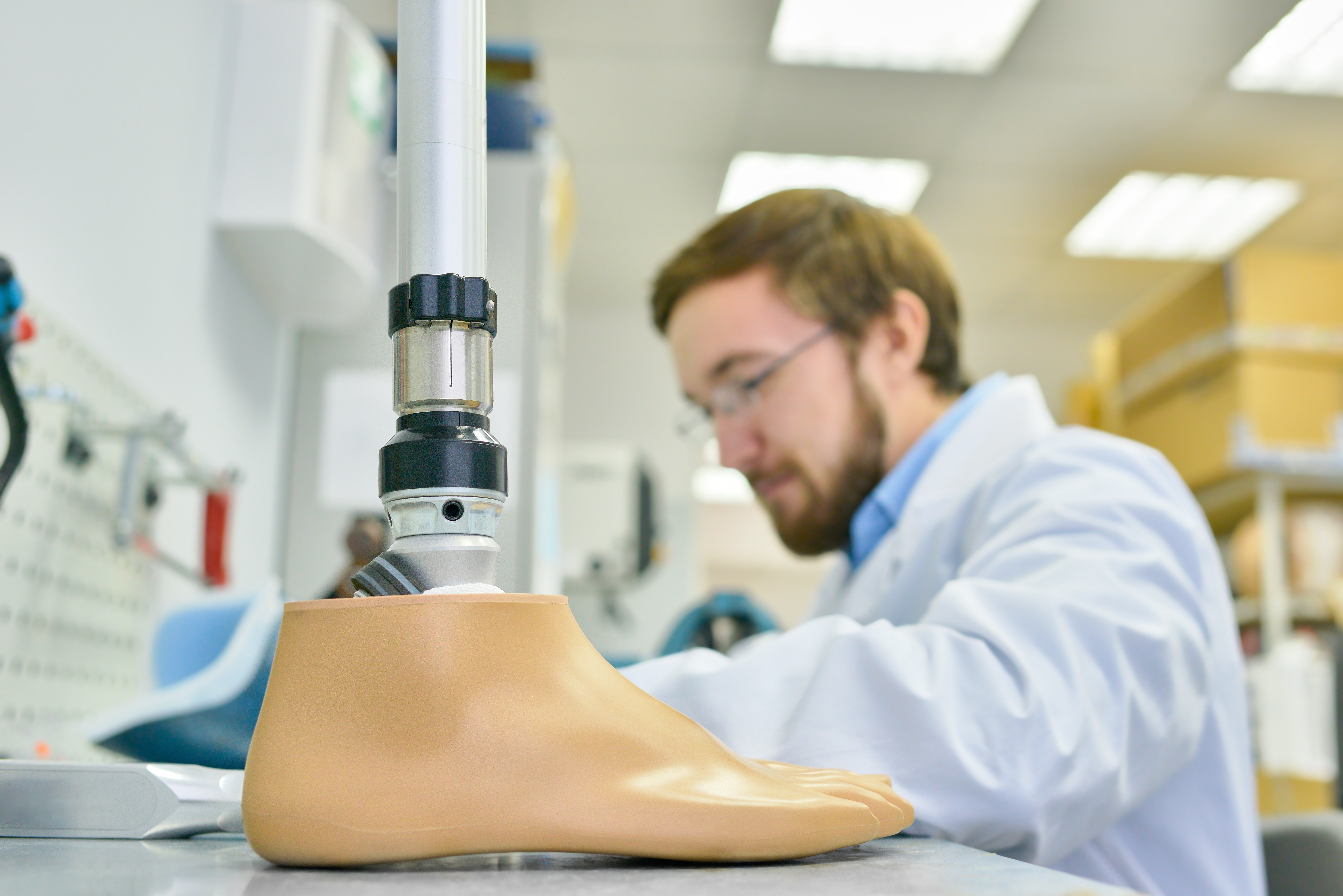Whether a longtime prosthesis wearer or just a beginner, it’s important to have a good relationship with your prosthetist to ensure a successful experience. Consistent communication, maintenance, and hygiene can help keep minor discomforts from becoming major issues. Here are seven tips for a better experience:
#1: Visit Your Primary Care Physician (PCP) Every 6 Months
Keep regular appointments to discuss the condition of your residual limb and prosthesis. This is a good time to let your physician know about any needs you might have such as new liners, socks, or shrinkers so they can write a prescription for you. There may be other issues if your socket no longer fits or you are experiencing discomforts that should be addressed sooner rather than later.
#2: Stay Informed about Your Medical Insurance Coverage
Medicare, Medicaid, private insurance, primary insurer, secondary coverage policies—it can be confusing, so make sure you understand what your deductibles and copays are. It’s a good idea to see if a secondary coverage policy is an option that could cover more of your prosthetic expenses.
#3: Know Your K-Level
K-levels are used to define an amputee’s mobility level. They range from K-0 to K-4 with K-4 being very active or athletic. This is determined by your PCP or prosthetist and should be documented in their notes.
#4: Visit Your Prosthetist Every 3 Months
Even if you are not experiencing active discomfort or other problems, be sure to check in with your prosthetist regularly. Always contact your prosthetist in between appointments if you notice something wrong with your prosthesis or residual limb.
#5: Practice Good Hygiene
Hygiene is extremely important to the health of your residual limb and in the daily cleaning of the inside of your liners. Be sure to note the condition of your sound limbs such as cracks in dry skin, blisters, and ulcers. These can lead to complications down the road resulting in infection and possibly further amputation.
#6: Stay Active
Wearing a prosthesis all day with limited movement or in a wheelchair is not great for your overall health. Blood circulation can easily become a problem, particularly in diabetics. Try to be active, standing and walking around as much as possible to promote blood circulation.
#7: Sock Ply Management & Liners
Following an amputation, a residual limb will change shape and size, especially for lower limb amputees. Various sock ply options of full-length and/or partial length may be needed to support your limb’s shape and maintain good socket fit. Adjustments may be needed throughout the day based on your activity. Other factors like changes in body weight, medications, or dialysis treatment can affect limb volume fluctuation. Sock ply configurations will help ensure proper socket fit and comfort.
Likewise, liners may need changing to help with comfort and limb health. Liners can wear out in certain spots, leading to thinning of the protective gel and possible skin breakdown. Most insurance will cover two new liners every 12 months.
Regular appointments with your prosthetist are beneficial to your overall health and success with your prosthetic. BioTech Limb and Brace is committed to your care. Contact us today to learn more.

